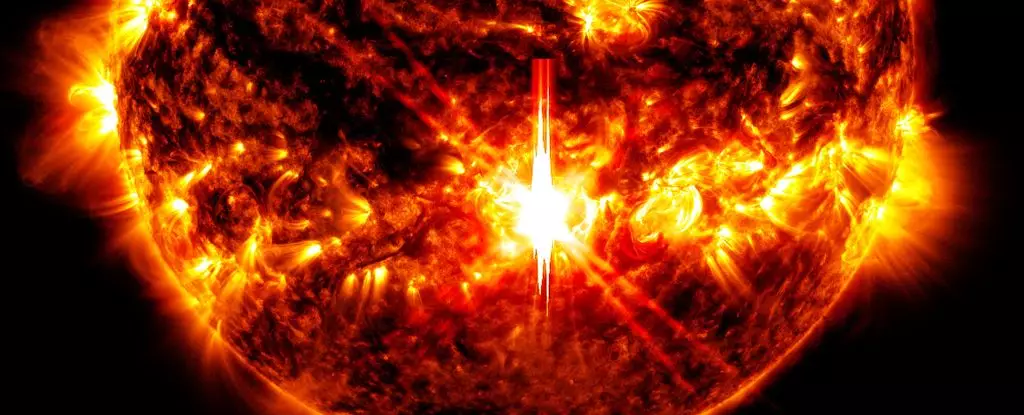On October 3, the Sun delivered a stunning cosmic display with a flare that registered a phenomenal X9.0 on the solar flare scale, marking it as the most powerful eruption the Earth has experienced in seven years. This fiery release of energy emanated from the solar surface, effectively stealing the spotlight and igniting excitement among astronomers and space enthusiasts alike. Accompanied by a halo coronal mass ejection (CME) directed straight at our planet, this event not only represents a peak in solar activity but also serves as a reminder of the dynamic nature of our nearest star.
In the context of ongoing solar cycles, this particular flare is significant as it marks the second X-class flare of October 2024, both linked to the same sunspot region, designated AR 3842. The flare’s magnitude places it among the top 20 most powerful flares ever recorded, with its predecessor being an X7.1 that erupted just two days prior. For context, the recordholder before now was an X11.88 flare in September 2017, showcasing the Sun’s incredible variability and potency.
Sunspots, temporary dark patches on the solar surface, are the epicenters of solar flares. These spots arise from the Sun’s intense magnetic activity, where magnetic field lines can become tangled and compressed. In particular, the beta-gamma-delta classification of sunspots indicates a chaotic magnetic environment, increasing the likelihood of significant releases of energy. As seen with AR 3842, this complexity led to a rapid succession of powerful flares.
The magnetic configuration of sunspot regions often influences their eruptive behavior. In this case, the beta-gamma configuration contains oppositional forces that make them more susceptible to reconnection events, causing explosive reactions like solar flares. Understanding these mechanisms is critical, as they not only provide insights into solar dynamics but also play a crucial role in predicting space weather that can have drastic effects on Earth.
While the majority of Earth’s inhabitants are sheltered from the worst effects of solar radiation due to the protective atmosphere, solar flares and CMEs can interfere significantly with technological systems. High-frequency radio communications can momentarily falter due to these explosive releases from the Sun. More serious disturbances arise during CMEs, often accompanied by solar flares. These violent expulsions consist of billions of tons of solar material and can generate geomagnetic storms upon interacting with Earth’s magnetosphere.
These storms can lead to increased electric currents in the upper atmosphere, presenting challenges for power grids and satellite operations. Operators must remain vigilant, as even minor fluctuations can necessitate corrections and adjustments to maintain stability in these systems. Additionally, satellite GPS technologies might also experience disruptions, which could have cascading effects on various sectors reliant on accurate positional data.
Despite the potential chaos, one of the more colorful outcomes of solar flares and CMEs is the phenomenon of auroras, or the northern and southern lights. When charged particles from solar events collide with Earth’s magnetic field, they excite atmospheric particles, leading to beautiful displays of light across the night sky. During the recent surge of activity, aurora alerts were issued as far south as 50 degrees latitude, offering many individuals the opportunity to witness one of nature’s most spectacular displays.
The intensity and longevity of auroral activity can be quite variable and largely depend on the strength and timing of solar events. The community of aurora watchers eagerly anticipates conditions ideal for skywatching, with forecasts suggesting a protracted period of heightened auroral activity following the recent flares.
In light of these recent solar phenomena, we must recognize the implications of ongoing solar activity as we move through the peak of the Sun’s 11-year cycle. As solar scientists continue to monitor these developments, understanding the patterns and potential hazards of solar flares and CMEs becomes increasingly vital. Each significant flare not only contributes to our understanding of solar dynamics but also emphasizes the importance of preparedness for their potential effects on Earth. As we step into an era of heightened solar activity, communities worldwide must remain informed, vigilant, and ready to embrace the breathtaking beauty of nature’s display while ensuring the safety and resilience of our technological infrastructure.

